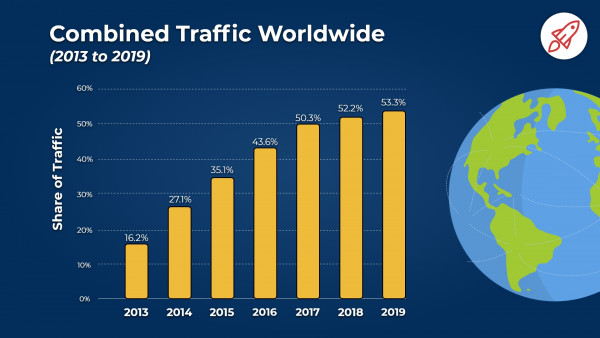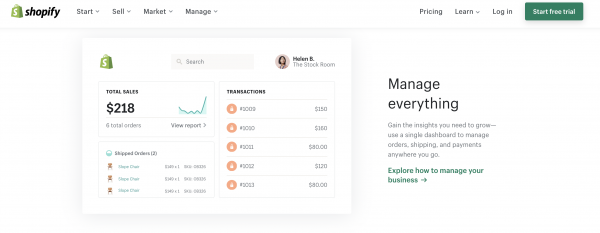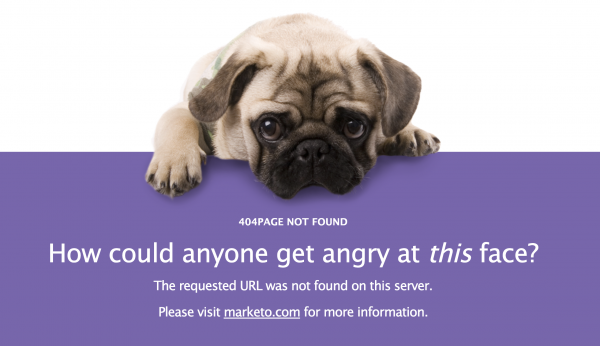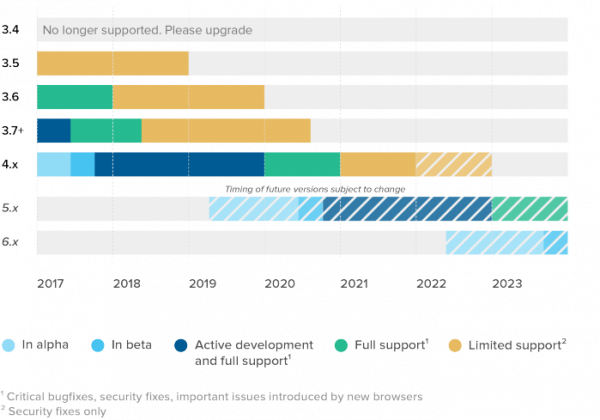How Much Does a Website Cost: From Enterprise to Small Business

A website is the most important sales and marketing asset for any business large or small. It acts as a digital storefront whether sales are done offline or online. It’s the 24/7 employee that never takes time off and has the potential to bring in a constant stream of sales.
That’s why it’s so common to hear the question: “how much does a website cost to build?” Unfortunately, that’s not an easy question to answer and the conversation typically starts with: “well, that depends”. Any given build can cost between $1,000 and $100,000, while web applications can easily go beyond $300,000 depending on what functionality is required.
Here’s an example of why it’s a hard number to pull out of a hat without any background information:
This past weekend I built a birdhouse with my kids. We didn’t have a whole lot of time and our resources on hand were rather limited. So we decided on a basic bluebird house design that could be put together with a handful of wood screws and cedar scraps from my last project. All in, the materials would’ve cost less than $10 but the outcome was exactly what we needed, a simple (also known as cheap) project that let the kids explore something new.
But what if I was a bird enthusiast building my 100th birdhouse and I wanted something a bit fancier? Maybe I have a bit more time, tools, and resources to put towards the project. This $100 bird mansion on Amazon might be a bit more up to my specifications. They’re both birdhouses and they both get the intended job done yet one is 10x more expensive than the other. Those are two very different projects for very different people that require unique outcomes. Without information about the type of project, I was looking to build it would’ve been hard for someone to guess which was the best fit.


Seeing a physical product side by side often makes it obvious why one is more expensive than the other. When it comes to website development it’s hard to compare functionality and adaptiveness to a physical outcome. There are many activities that go on under the hood that can make the cost of development rise.
While it’s hard to answer how much a website would cost without knowing the specifics, there are important factors that can help define the scope and ultimately cost of any given project. So, while it’s next to impossible to give a set price answer, here are things you should consider when working with a developer to determine the overall price of your web project:
Upfront Website Cost Considerations
There are two sets of costs when building and maintaining a website. These are split into fixed upfront costs and ongoing variable costs that continue to keep the site running efficiently. These are the upfront expenses to be aware of when deciding on a project’s scope.
Planning & Strategy
What is the purpose of the website? Is it intended to provide basic marketing information, have e-commerce functionality, advanced capabilities, or third-party integrations? All of this needs to be decided and planned before kick-off. There is no sturdy house without a foundation and there is no successful website without a thoughtful strategy.
Strategy can range greatly depending on the available resources at the outset of a project. Typical elements include:
- Market research
- Competitive research
- SEO strategy
- Information architecture
- User testing
- Stakeholder meetings
Custom design vs pre-developed template
The most noticeable aspect of a site is the design. Some companies try to save costs by using a pre-developed template that dozens, if not hundreds of other websites are already using. While it might work for some companies to simply slap on their logo and switch around the brand colors it has the potential to backfire. It’s better to avoid cutting corners and start with custom-designed templates that fit your brand and buyer requirements.
The importance of UX design principles can’t be underestimated. Subtle differences in layouts and features have the potential to make huge differences in how audiences interact with a website and even whether they convert into buyers or not. While a custom solution will cost more it’s also going to produce better results with substantially better long term return on investment.
There’s never a one size fits all solution so picking between a ready-made theme and custom template will always be project (and mostly budget) dependent.
Number of unique templates
The complexity of each project’s design process is highly dependent on how many unique page templates a site requires. Each unique design needs wireframing, client feedback, and iteration. The more requirements for special features the more expensive the design process becomes.
Responsive design
With mobile traffic eclipsing the 50% mark for multiple years now, a mobile responsive website is a requirement at this point. This means web designers are required to plan out how to configure layouts and implement designs that adapt to multiple sized mobile environments.
It’s an additional layer of complexity that is overlooked when considering the cost of custom web design.
 Custom CMS development
Custom CMS development
There are hundreds of CMS options available and they all can do something different. However, many of them don’t accomplish their user's exact needs right out of the box. Frequently projects have special CMS considerations that need to be developed to help internal users do their jobs more efficiently.
There’s plenty of opportunities to turn a CMS into the centerpiece of your business processes. These processes dictate what types of custom fields, datasets, dashboards, and user abilities that should be built into the CMS.
3rd party integrations
Part of streamlining processes is syncing different systems to your website. This allows for seamless data integration that would otherwise send staff in many different directions trying to find and maintain.
This is one of the most critical aspects to consider when thinking about website cost as the number of integrations and sophistication of those integrations can play out in very dissimilar ways. There’s a wide variety of types of software that clients ask to be connected to a site like:
- Email marketing
- SMS marketing
- Customer relationship management platform
- Marketing automation
- Data warehouse
- Video manager
- Payment processing
For every type of system above each has dozens, if not, hundreds of solution providers that add another layer of complexity when planning for integration. Attempting to integrate MailChimp or Constant Contact may take varying levels of effort even though they are both email providers. It’s these complexities that make blanket cost predictions difficult.
E-commerce functionality
Do users need to purchase products or services through your site? How does the exchange happen, is it a one time fee or subscription offer? E-commerce can take many different forms and therefore requires different types of payment processing to be put in place to handle transactions.
Full-fledged product e-commerce is typically handled by a specialized CMS platform like Shopify or Magento. While specialized service fees often use payment processing systems like Stripe or Paypal and recurring payments require platforms like Chargify. If a website needs any type of online purchasing you can guarantee that it will add to the development cost.

Content development
Some organizations decide to own content development, some decide to let a professional handle copywriting, and others choose a little of both. You can expect that each page that requires outsourced copywriting to increase the overall cost of your final site production.
Copywriting website content comes out best when it’s combined with an SEO strategy that targets keywords relevant to your target audience. There should be research that goes into this stage, not just writing new content for the sake of writing something fresh.
Content migration
While content migration on the surface sounds like an easy process it can be far from it. Ideally, if there’s already a live site the majority of content types can be migrated on a one-to-one basis. This means content on the old site matches up with the pages that are on the new version. We all know the ideal scenario rarely happens.
Most often old content needs to be pruned, updated, or fully scrapped and rewritten. This creates issues regarding dead links that need to be addressed with a redirect plan for the future health of the new website.
Website Agency vs. Web Freelancer vs. DIY
The choice between using a website agency, web freelancer, or doing it yourself is one of the toughest when it comes to redesigning a website. Each option has its own pros and cons (and price points) that aren’t always apparent before starting a project but should be weighed carefully.
Most businesses will end up with an agency or freelancer for their web project but occasionally small operations will lean towards a DIY website builder platform like Wix and look for internal staff members to do a small website. These drag-and-drop website builders offer a cheap solution for projects running on a slim budget. Though the drawbacks of a DIY effort are ending up with a commonly used template design and basic page functionality. Anything more than a static marketing website will need a more robust solution.
Web freelancers are a nice middle of the road offering. They have the ability to develop a custom solution with the potential for more technical expertise on hand. They’re more costly than a do-it-yourself project but are still a cost-efficient resource. In most scenarios, a freelancer is best suited as a complimentary resource on larger projects or smaller website builds.
Using a full agency while a higher cost leads to more complete projects. Agencies provide varying skillsets and pooled resources that can specialize in differing aspects of a project like design, development, and marketing. It would be very difficult to find a consultant that can cover that many bases effectively.
On-going and Recurring Costs
Most people think about the up-front costs of a new website build but the recurring costs are easily forgotten or pushed off as an afterthought. Rarely in life do you come across something that doesn’t require routine maintenance, updates, or additions. Without routine maintenance, a website will quickly stop working and can even go offline completely. So what really goes into ongoing website costs?
Domain Renewal
The most basic, yet highly important ongoing cost is domain renewal. A domain is a unique URL that your website is attached to. While you may have the rights to a domain name that will only continue as long as you keep paying the provider.
It’s a fairly insignificant renewal cost but forgetting a renewal can have far greater consequences to a brand. Back in 2017, marketing software provider Marketo missed their domain renewal causing their web application and website to go offline. This caused outages for thousands of their customers. Luckily, the situation was quickly fixed by a helpful evangelist user that renewed on the company's behalf. It could have easily gone another way if the third-party wasn’t good-natured and didn’t want to give the domain back. Marketo would’ve been forced to purchase a new domain for their services or buy the old one back for a large amount of money.

Hosting
Web hosting providers sell space on their servers which allows searchers to access your site. The quality of a hosting provider can have an enormous impact on how well your website performs. It can control page performance, downtime support, and expansion capabilities.
Web hosting costs can range greatly depending on how large your application is or how much traffic your website needs to handle. This is one of those services that there’s always a cheaper offer on the market but it’s almost never worth the corners it cuts for the few dollars it saves.
Website Security (SSL Certificate)
Unsecure websites are bad for everyone involved. Companies and users open themselves up to compromised data. Many modern browsers have made website security a required standard as they implemented “not secure” errors on any webpages that don’t have an SSL certificate installed.
An SSL certificate protects the flow of data between users and the site they’re interacting with. These are most often purchased through hosting providers and can range from free to over $1,000 a year. More expensive SSL certificates offer varying levels of security for sites that need to meet specific standards.

Website Maintenance & Support
The most common ongoing website cost is maintenance and support. Nothing lasts forever; gadgets break, cars need oil changes, and our bodies need medicine. Websites are no different than any of these if anything they require more upkeep. Web technologies are changing so quickly that a technique that worked a couple of months ago could easily be broken today.
It’s for this reason that most website developers will have ongoing yearly retainer contracts with their clients. Retainers cover small design enhancements, broken features, future strategy, backend updates, and more. With retainers, clients can better control and budget for yearly maintenance costs that would otherwise sneak up on unsuspecting website owners.
Content Management System (CMS) upgrade
A content management system houses your website. It’s where your internal users spend most of their time creating content, managing pages, and creating site reports.
CMS upgrade costs are in the same vein as website maintenance retainers but on a larger scale. As web technologies adapt CMS providers need to update their products to fit within the landscape. They’ll add features, change functionality, alter security, and improve code quality. These changes can make the perfect storm for broken websites that can require drastic changes.
We use the CMS SilverStripe and speak to the importance of upgrading to supported product versions in this blog post. Websites currently using SilverStripe range from multiple versions and because it’s a high-quality platform many have continued to operate without issue. The problem with this is many of these will become unsupported in the near future and will require full redesigns. The longer website owners wait to upgrade their CMS past the release of a new version the more expensive and mandatory it will eventually become.

Marketing costs
Marketing costs while separate from website development costs are important to consider nonetheless. Many websites follow the philosophy of “if you build it they will come” and that’s a recipe for disaster. Simply building a website will not produce visitors out of thin air.
There’s a full suite of services that can help bring traffic to your website. Some of these include:
- SEO & content marketing
- Digital advertising
- Copywriting
- Email marketing
- Social media management
- Digital reporting & monitoring
What does a website cost?
By now it's obvious that’s a question that can’t be answered without more information on your unique project. There are too many unknown variables that can affect each proposal. Anyone who tells you they can offer an estimate without knowing all of the features specific to your website will most likely end up blowing their budget. If you’re interested in learning more about what your website project might cost drop us a line.
Bluehouse Group has 20+ years of experience in estimating and building complex web solutions. Our team is always happy to help. We follow a consultative approach to website design that brings out the best in each project every time.